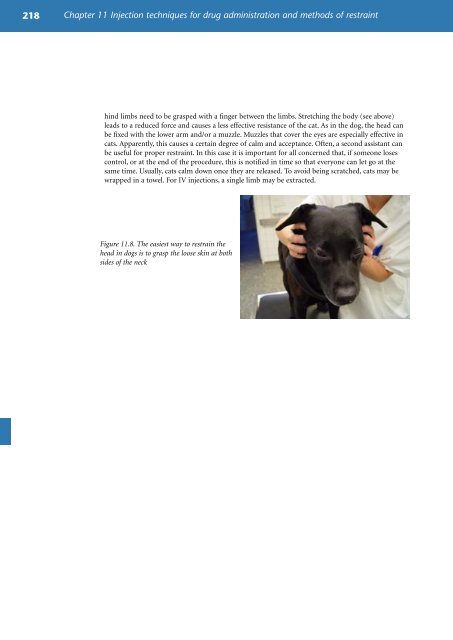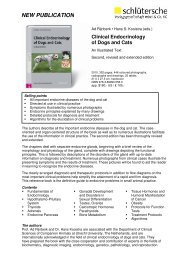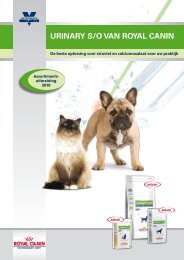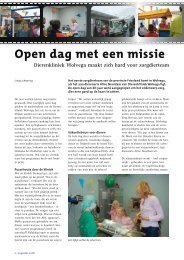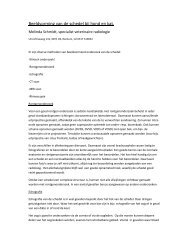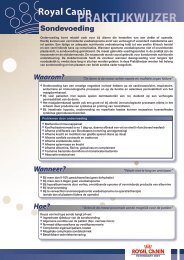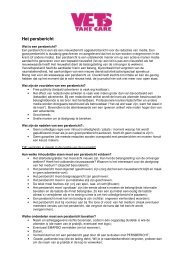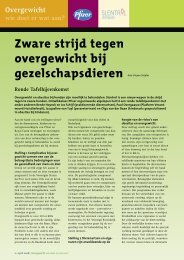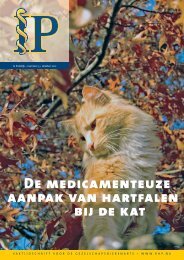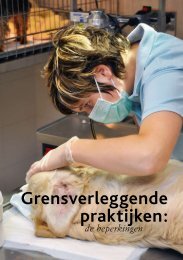Injection techniques for drug administration and methods of restraint
Injection techniques for drug administration and methods of restraint
Injection techniques for drug administration and methods of restraint
You also want an ePaper? Increase the reach of your titles
YUMPU automatically turns print PDFs into web optimized ePapers that Google loves.
218<br />
Chapter 11 <strong>Injection</strong> <strong>techniques</strong> <strong>for</strong> <strong>drug</strong> <strong>administration</strong> <strong>and</strong> <strong>methods</strong> <strong>of</strong> <strong>restraint</strong><br />
hind limbs need to be grasped with a finger between the limbs. Stretching the body (see above)<br />
leads to a reduced <strong>for</strong>ce <strong>and</strong> causes a less effective resistance <strong>of</strong> the cat. As in the dog, the head can<br />
be fixed with the lower arm <strong>and</strong>/or a muzzle. Muzzles that cover the eyes are especially effective in<br />
cats. Apparently, this causes a certain degree <strong>of</strong> calm <strong>and</strong> acceptance. Often, a second assistant can<br />
be useful <strong>for</strong> proper <strong>restraint</strong>. In this case it is important <strong>for</strong> all concerned that, if someone loses<br />
control, or at the end <strong>of</strong> the procedure, this is notified in time so that everyone can let go at the<br />
same time. Usually, cats calm down once they are released. To avoid being scratched, cats may be<br />
wrapped in a towel. For IV injections, a single limb may be extracted.<br />
Figure 11.8. The easiest way to restrain the<br />
head in dogs is to grasp the loose skin at both<br />
sides <strong>of</strong> the neck


